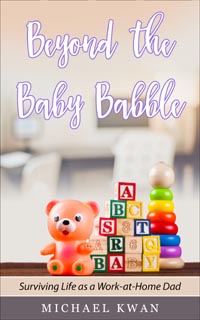
Writing with good grammar is only one part of the equation. It’s great when your spelling is just right and you use the right kind of punctuation in the right places, but you also want your writing to be interesting to read. With that challenge comes the possibility of bending the grammar rules and you risk making more mistakes.
When it comes to writing style, one tactic that I like to use from time to time is something called inversion. This can take on many different forms, but the inverted sentence structure is one of the most common ones. Basically, you take what would normally be the second “half” of your sentence and put it in front.
Compare these two sentences:
1. I ate a sandwich, because I was hungry.
2. Because I was hungry, I ate a sandwich.
This doesn’t change the meaning of the sentence, but it can change how it feels when someone reads it. In this instance, you may be wanting to emphasize your hunger rather than the sandwich. For a narrative, it can also help to build a sense of suspense.
1. Dominic slid underneath just as the garage door was about to come slamming shut onto the ground, narrowly avoiding certain death.
2. Just as the garage door was about to come slamming shut onto the ground, Dominic slid underneath, narrowly avoiding certain death.
You’ll notice that exactly the same words are used, but in a different order. The grammar is still correct; it’s just that the second sentence is more fitting of a thriller or action story. Just as with maintaining parallel structure, you want to ensure that the right meaning is being conveyed. However, there are times when you may want to bend the rules for additional effect.
“Yoda speak” is another form of inversion and, depending on how it’s used, it can sometimes sounds sophisticated or almost Shakespearean.
1. I don’t have time.
2. Time, I do not have.
This is when you invert parts of a sentence without there being a natural break in the clauses. This is quite unlike the examples above, since those already had a comma to separate the different parts. You may or may not want to use this method, depending on the context and the target audience. It’s the same kind of consideration you’d want to take when using sentence fragments or ending a sentence in a preposition.
Be creative with your sentence structure and your choice of words. Don’t be afraid to experiment and you’ll be amazed at the great writing you can achieve.




I tend to Yodaspeak a lot. Like, instead of saying ‘John always seems to be on time’, I might say ‘John seems to be on time always’. Even though the latter conveys the same message, I smack my forehead for not saying it in the correct order.
-Jean
I think Yodaspeak there might be closer to something like, “Always on time, John seems to be. Mmm.”
Haha, I guess I’m halfway through the path to being a true Yoda then!
-Jean
Do you by any chance know some famous (non Yoda) examples of Yoda speak?
It’s not really Yoda speak, per se, but JFK’s famous words were a little inverted:
“Ask not what your country can do for you…”
A more conventional and straightforward line would have been:
“Don’t ask what your country can do for you…”
Ah cool, OK.
Thanks (oh, and for what it’s worth, your site has suddenly started working for me again…)
I love the incorrect usage of “you’re” in the first paragraph… How ironic.
Good catch. It was a silly typo since I had two sentences in my head at the time:
“It’s great when your spelling is just right”
and
“It’s great when you’re spelling just right”
YO-da speak. Yey!